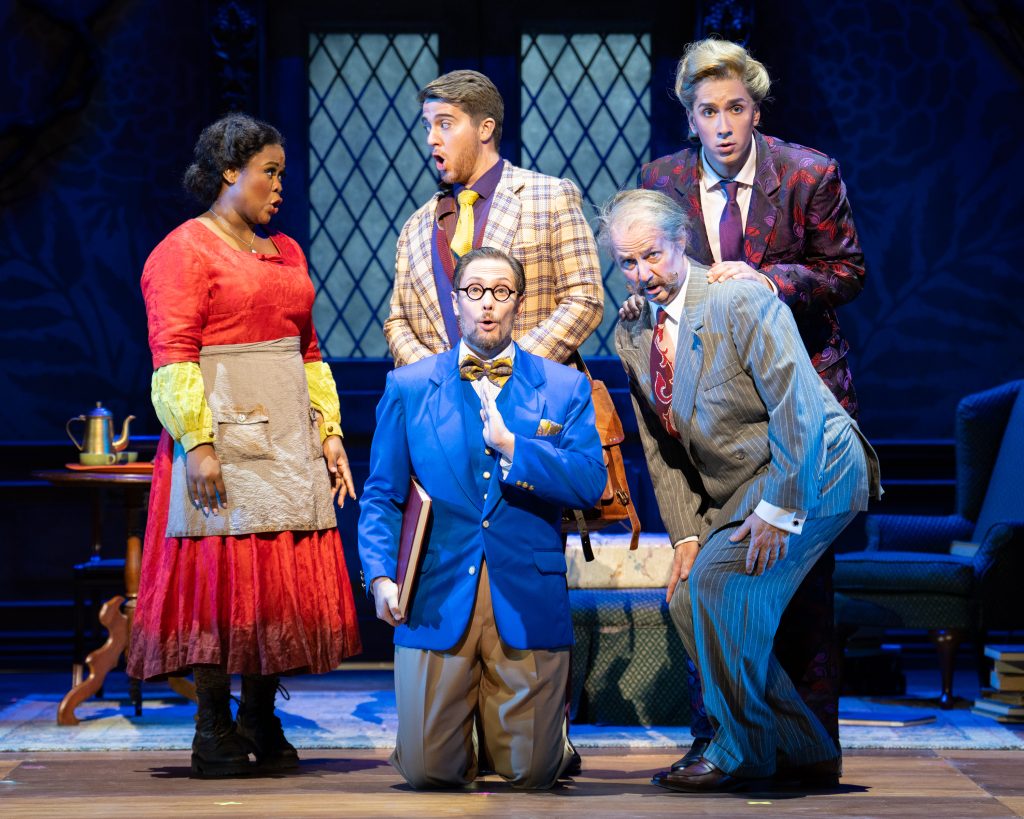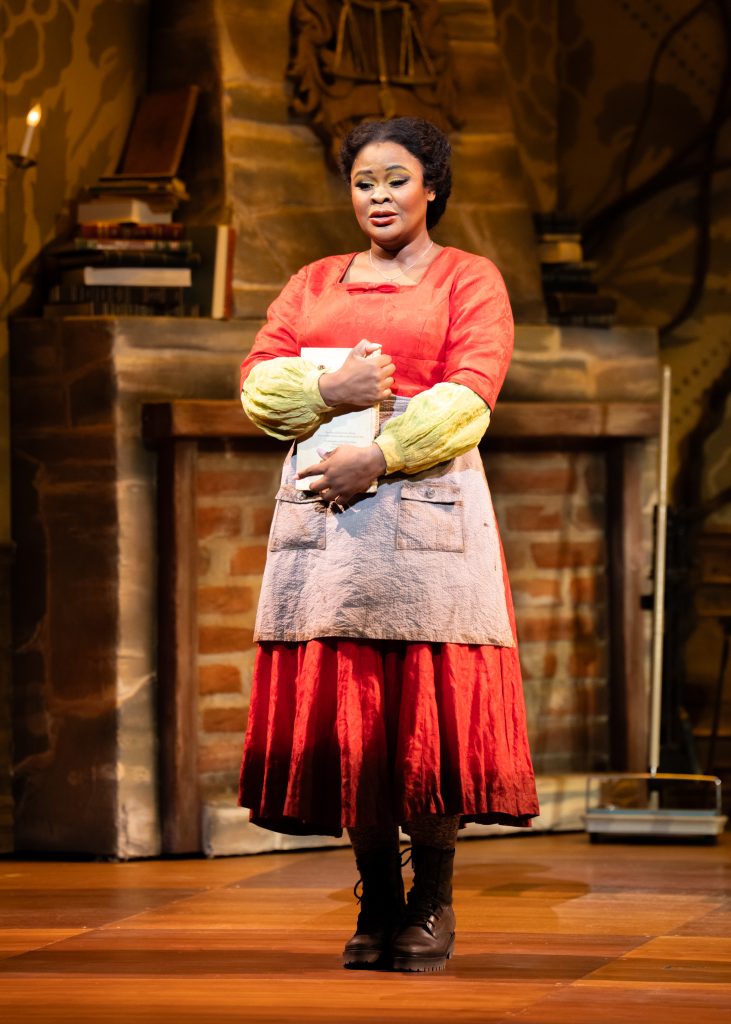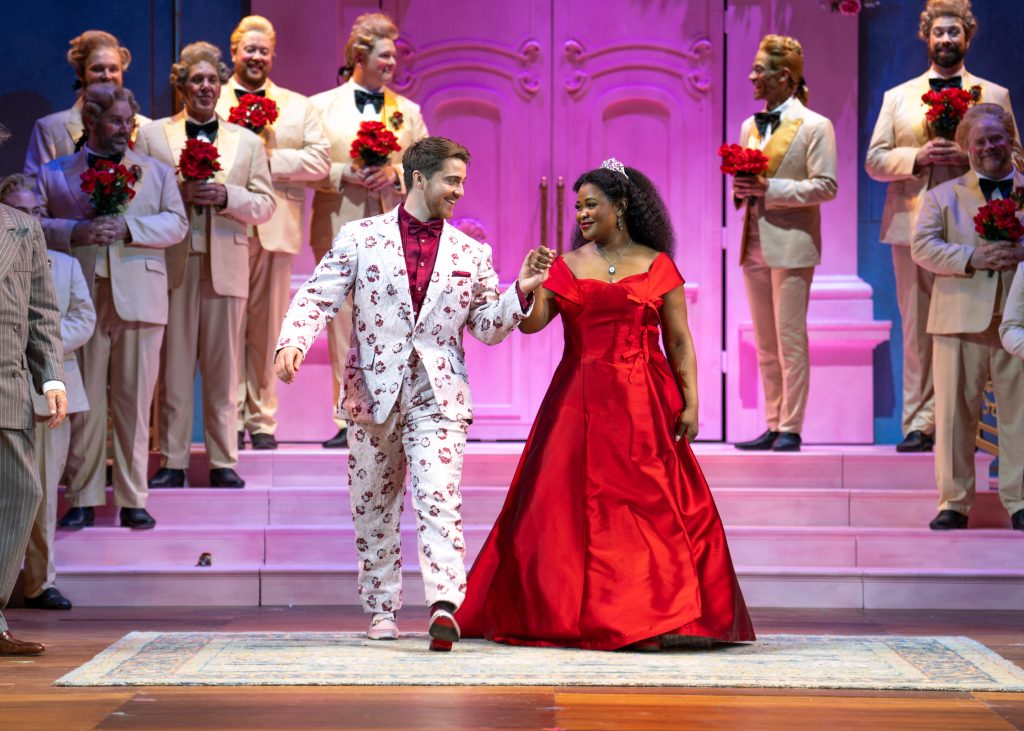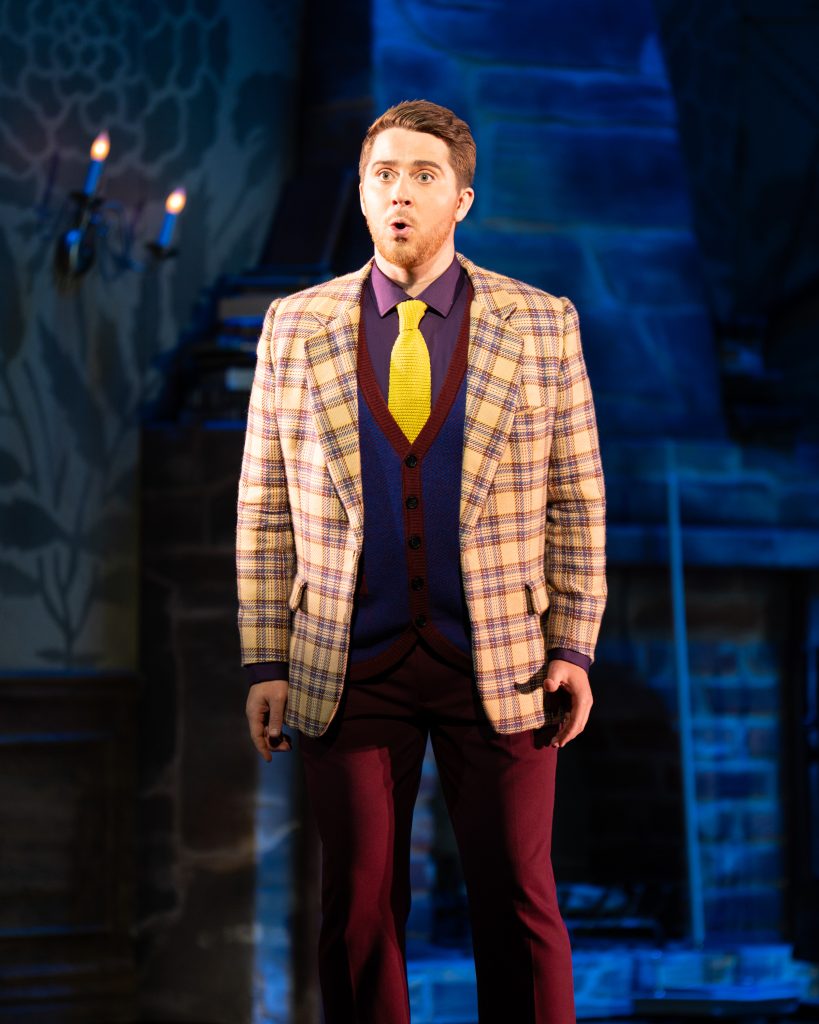The Lyric Opera of Kansas City’s new production of Cenerentola has just about everything you want in an opera. The ingenious set design by Steven C. Kemp, created in Kansas City and said to be inspired by the films of Wes Anderson, is alive with color and movement and features a humble hut for Don Magnifico’s family and a lavishly stylized palace interior.

The direction by Michael Shell, assisted by Matthew J. Schulz, conforms to the dictum that the best stage direction is that which you don’t notice. The characters moved with natural ease throughout, and the action is spurred so compelling forward that the nearly two-hour Act I sailed right by. Amanda Seymour’s costumes and David Zimmerman’s wigs and makeup, in keeping with the Anderson formula, defied an easy placement in any given time or place. They were eclectic but not wildly extravagant.
“Anderson’s cinematic worlds are filled with whimsical ensembles, stories that teeter on the edge of stylization and deep humanity,” Shell writes of his inspiration. “His films … explore fractured families, misunderstood outcasts, and people desperate to connect.” Perfect, one might say, for a comedy based on the familiar Cinderella story.

The singing here, ranging from good to superlative, was enhanced by the comedic foundation on which most of the characterization of Don Magnifico (Matt Burns), Dandini (Ian Rucker), and the stepsisters (MiKayla Lynn Hatfield and Christina Grohowski) was constructed.
Even the leads, Siphokazi Molteno as Angelina (Cinderella) and Jack Swanson as Don Ramiro (the Prince), provided as much wit as they did serious romance. Colin Ramsey as Alidoro, on the other hand, impressed much with his rich bass as with his agile role as the action-driving servant. Molteno is probably destined become an important Rossini talent: Her mezzo-soprano is rich and warm, and she played the humble Cinderella of Act I so skillfully that her more outgoing Act II character made the final “Naqui all’affanno e al pianto” (the only real “big aria” that she has in this opera) especially rewarding.

Swanson is in a category all his own, his Don Ramiro having already gained some renown worldwide. With a tenor that is both delicious to listen to and remarkably agile in the Rossinian roulades, he sang his big show-stopping cabaletta “Sì, ritrovarla io guiro” about as well as any tenor today.
The Act I duet between the Prince and Cinderella, “Un soave non so che,” was tender if a bit hesitant: Plausibly, perhaps, as we weren’t yet sure that these two love-birds were going to make it. Molteno began to get her comedic footing in the “Quel ch’è padre” and Burns brought whimsy to Magnifico’s “Sia qualunque delle figlie,” in which he prematurely dreams of a life of leisure.
Rucker as Dandini, who through much of the opera poses as Ramiro, was strong on Anderson-like zaniness. Hatfield as Clorinda and Grohowski as Tisbe both sang beautifully and provided ongoing comic relief. And especially winning was Ramsey’s Là del ciel nell’arcano profondo,” in which he infused Alidoro’s role as wise mentor with unusual pathos.
The rip-roaring ensembles are my favorite part of this opera, and these were indeed a fun part of the production, with staging that underscored the comedic confusion. Gary Thor Wedow conducted the orchestra of musicians from the Kansas City Symphony. These intricately complex patter-numbers were fairly messy, ensemble-wise, especially those with vocal soloists placed at a distance from one another. These things do tend to improve, however, throughout the run of a production.
By Paul Horsley
Cenerentola runs through October 5th. For tickets go to kcopera.org or call 816-471-7344.
To reach Paul Horsley, performing arts editor, send an email to paul@kcindependent.com or find him on Facebook (paul.horsley.501) or X/Instagram (@phorsleycritic).
